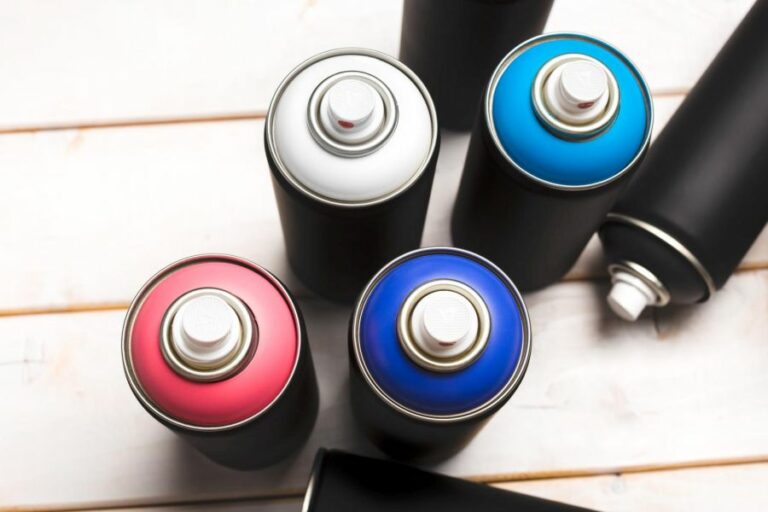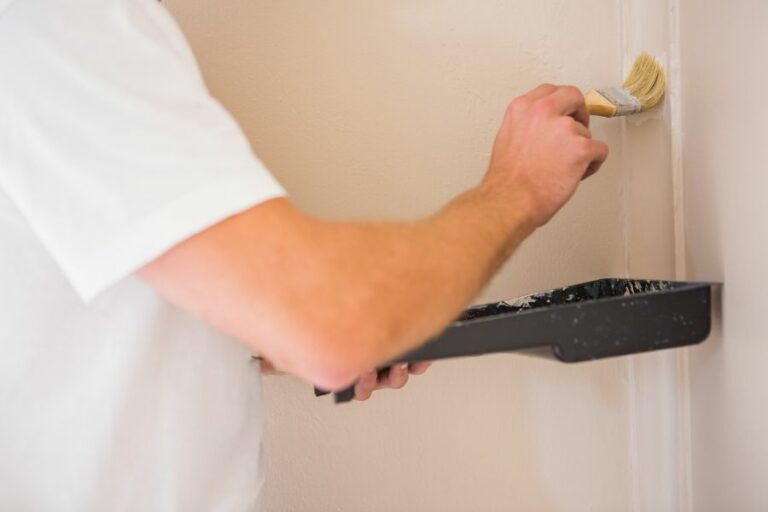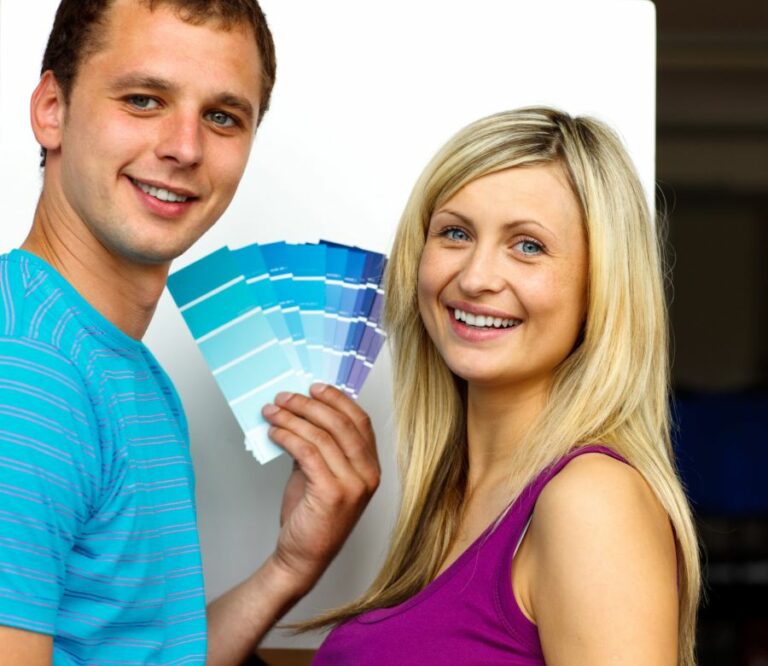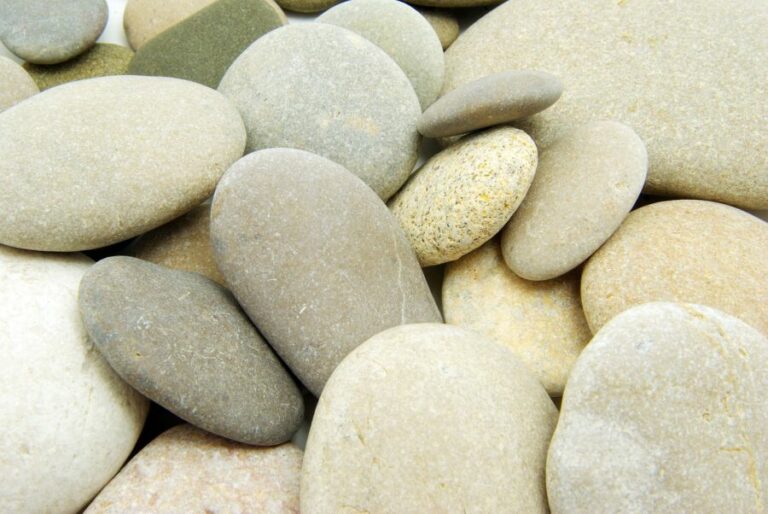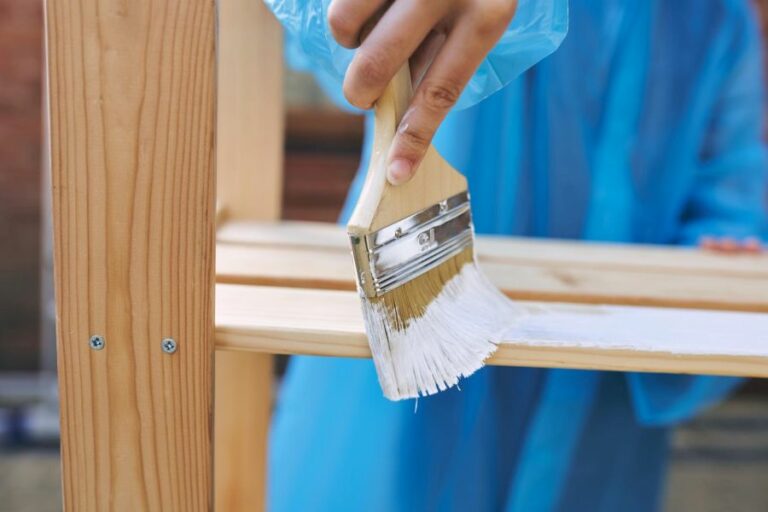Transform Your Outdoors with These Paint Color Ideas
Are you tired of staring at dull exterior walls? It’s time to breathe new life into your outdoor living space with fresh, captivating colors! My blog post, ‘Outdoor Paint Color Ideas,’ is your ultimate guide to transforming the feel of your home with just a single coat of paint. Get ready to explore a spectrum of inspiring shades that elevate your curb appeal and reflect your personality.
Outdoor paint color ideas:
This guide offers various outdoor paint color ideas to transform and add value to your outdoor living space. Popular options include coastal-inspired hues, such as seafoam green and navy blue; nature-inspired colors, like forest green and earthy brown; bright and bold tones, like sunshine yellow and fiery red; and monochromatic choices, such as pure white and charcoal gray. Style preferences, location, and the overall look of your house play a significant role in choosing the right color scheme.

Discover endless options to elevate your home’s exterior with our expertly curated outdoor paint colors. Mix and match hues, undertones, and finishes that suit your style and complement your home’s architecture. Let’s turn your vision into a stunning reality!
Contents
- 1 Exterior Paint Color Inspiration and Concepts
- 2 What is the Optimal Color Choice for Exterior Paint?
- 3 What is the Most Prevalent Exterior Color in Modern Design?
- 4 What Exterior Color Schemes Make a House Appear Larger?
- 5 What Exterior Paint Color is Utilized by Joanna Gaines?
- 6 How to Select the Ideal Color Combination for My Home’s Exterior Appearance
Exterior Paint Color Inspiration and Concepts
Transforming your outdoor living space with a fresh and modern look can be as simple as changing the paint colors. This change can set the tone for the entire area and add value to your home. I will provide various outdoor paint color ideas, considering different styles, environments, and preferences.
• Coastal-Inspired Colors
Nautical hues are a perfect choice for those who live near the coast or love the coastal vibe. These colors can provide a sense of relaxation and bring the beach right to your backyard. Some popular coastal-inspired colors include:
– Seafoam Green
This soft, muted green color brings a calming effect to any outdoor space. Seafoam green can be used on exterior walls or as an accent color for outdoor furniture, doors, and windows.
– Sandy Beige
Inspired by the beach, this warm neutral tone creates a cozy atmosphere. Sandy beige works well on exterior walls or as an accent color when paired with other coastal-inspired hues.
With a touch of sophistication, navy blue can be an anchor color. This dark hue can be used on exterior walls, outdoor furniture, and window trims.
• Nature-Inspired Colors
For those who enjoy the great outdoors, nature-inspired colors can blend harmoniously with the surrounding environment. These hues can help your outdoor space feel more like an extension of your indoor living area. Some popular nature-inspired colors include:
– Forest Green
This rich, deep green color evokes strolling through a lush forest. Forest green can be applied on exterior walls, outdoor furniture, and accessories.
– Earthy Brown
Adding a sense of stability and warmth, earthy brown can be used on exterior walls or as an accent color in outdoor living spaces. This natural hue complements various wooden elements and stonework.
– Sky Blue
Sky blue can create a serene atmosphere with its soft and airy feel. Apply this color on exterior walls, doors, and window trims, or use it as an accent color when paired with other nature-inspired hues.
• Bright and Bold Colors
For those who crave a more energetic and cheerful atmosphere, bright and bold colors can make a statement. These hues can uplift your outdoor space and make it feel more inviting. Some popular bold outdoor paint colors include:
– Sunshine Yellow
Radiating warmth and happiness, sunshine yellow can brighten up any outdoor space. This vibrant color can be applied to exterior walls, doors, and window frames.
– Fiery Red
To create a strong impression, fiery red can be an excellent choice. This bold color works well on doors, outdoor furniture, and as an accent on exterior walls.
– Electric Blue
Energetic and attention-grabbing, electric blue can elevate your outdoor space. Use this hue as an accent color or for painting outdoor furniture.
• Monochromatic Hues
For a modern and minimalist look, monochromatic colors can create a seamless and sophisticated appearance. These hues can be easily mixed and matched to achieve a cohesive design. Some popular monochromatic colors include:
– Pure White
Crisp, clean, pure white can make your outdoor space look spacious and uncluttered. This color can be used on exterior walls, doors, window trims, and outdoor furniture.
– Charcoal Gray
Sleek, sophisticated charcoal gray can add depth and elegance to your outdoor living area. Apply this color on exterior walls, trims, and outdoor furniture for a modern feel.
– Black
For a bold and dramatic statement, black can be applied strategically to create contrast and interest. Use this powerful hue on doors, window frames, and outdoor furniture.
• Final Thoughts
Numerous outdoor paint color ideas exist, from coastal-inspired hues to bright and bold statement colors. Factors such as your location, style preference, and the overall look of your house play a significant role in the choice of colors.
Before committing to a final color scheme, experiment with shades using swatches or paint samples. Ultimately, the ideal outdoor paint color should reflect your personality and enhance the beauty of your living space while also being able to withstand the natural elements.
Color Name | Color Hex Code |
|---|---|
Whisper White | #F5F5F5 |
Stormy Blue | #4F6A9A |
Sage Green | #9EA07C |
Warm Sand | #ECD9AE |
Classic Red | #A22727 |
Charcoal Gray | #4B4A4B |
Soft Yellow | #FFF4C2 |
Lake Blue | #007BA7 |
Terracotta | #D87B53 |
Forest Green | #22482D |
What is the Optimal Color Choice for Exterior Paint?
Choosing the right color to paint the exterior of your home can be daunting. With countless options available, it’s essential to find the perfect shade that not only enhances the overall aesthetic of your property but also offers excellent protection against the elements.
I will discuss the factors to consider when selecting the best color for your home’s exterior, along with some tried and tested recommendations to help you make the right choice.
• The Impact of Climate on Color Choice
Your area’s climate plays a significant role in determining the appropriate color for your home’s exterior. Depending on your location, you may need to consider specific colors that provide optimal protection against the sun, rain, and other weather conditions.
– Hot and Sunny Climates
In regions with hot and sunny weather, lighter shades are generally recommended. Light colors, such as white, beige, and light grey, assist in reflecting sunlight away from your house, helping to keep it cooler during those sweltering summer days.
I recommend considering pale yellow or soft blue as alternatives to white for homeowners who want to add more personality to their homes.
– Cold and Cloudy Climates
If you live in an area with predominantly cold and cloudy weather, opting for a darker shade might be a better choice. Dark colors absorb more sunlight, which can help keep your home warmer in winter. Some suitable options for these climates include dark grey, brown, or a deep shade of green.
• The Role of Architectural Style in Color Selection
Your home’s architectural style can significantly influence your color selection. Choosing a color that complements its architectural features is essential to preserve your property’s character and heritage.
– Classic and Traditional Homes
I recommend using timeless colors for classic and traditional homes, such as heritage properties and colonial-style houses. These may include off-whites, creams, greys, and muted tones of blue or green. You can maintain your home’s historical charm and sophistication by choosing a classic color.
– Contemporary and Modern Homes
On the other hand, modern homes might benefit from bolder colors that reflect their cutting-edge design. Black, dark grey, or vibrant shades of blue, green, or red can create a dramatic impact, making your home stand out in your neighborhood.
• The Importance of Neighbourhood Consistency and Color Harmonization
When painting your home’s exterior, it’s crucial to consider the context of your neighborhood. Your choice of color should not only please you but should also blend well with the surrounding houses.
Look around your area and take note of the prevalent colors and themes among your neighbors’ homes. By selecting a color that harmonizes with these shades, you can create a sense of cohesion in your community, enhancing the overall curb appeal and potentially increasing the value of your property.
• Tips for Choosing the Right Color
– Visualize with Online Tools
Many paint suppliers and design websites offer online tools that allow you to upload a photo of your home and experiment with various color combinations. These tools can be a great starting point for visualizing the impact of different colors on your property before making a final decision.
– Test Paint Samples
Once you have narrowed your choices, I recommend purchasing small paint samples and creating swatches on your home’s exterior. Observe these swatches at different times of the day and under various weather conditions to understand how the color will appear on your house.
– Consult with a Professional
Consulting with a professional painter or designer might be worthwhile if you struggle to decide on the perfect color. They can offer expert advice, taking into account your home’s architectural style, existing finishes, and the character of your neighborhood to help you choose the ideal shade.
By considering the climate, architectural style, neighborhood harmony, and personal preferences, you can confidently select the best color to paint your home’s exterior. Remember to visualize your options, test paint samples, and seek professional advice, if needed, to ensure you make the best choice for your unique property.
Rank | Color | Feeling |
|---|---|---|
1 | White | Reflects sunlight, stays cool |
2 | Light Gray | Neutral tone complements natural surroundings |
3 | Taupe | Calming effect adds character to the home |
4 | Soft Blue | Calming effect, adds character to the home |
5 | Light Green | Blends with nature, good for rural settings |
What is the Most Prevalent Exterior Color in Modern Design?
The color of a vehicle, house, or any other item is important, as it communicates personal preferences and contributes to practicality, aesthetics, and resale value.
I will analyze various factors that contribute to the popularity of specific colors and provide recommendations for those looking to decide on the exterior color of their choice, whether for their car or home.
• Factors That Influence Color Popularity
– Cultural Significance and Correspondence
Color preference often varies across different cultures and regions. For instance, in many Eastern cultures, red signifies good fortune and happiness, whereas, in Western cultures, it often represents excitement and passion.
Therefore, the most popular exterior color may differ globally, primarily influenced by cultural values and beliefs.
– Trends and Consumer Behavior
Like fashion, colors tend to rise and fall in popularity according to contemporary trends. These fluctuations can be influenced by various factors such as fashion, marketing campaigns, and technological advancements.
Particular hues might dominate certain periods or seasons, with others following suit, resulting in shifts in color preferences among consumers.
– Climate and Weather
In areas with warm climates, lighter colors might be more popular due to their ability to reflect the sun’s rays and keep the interiors cooler. In contrast, darker colors may be more common in colder regions where absorbing sunlight can be advantageous.
This can help explain variations in popular exterior colors among various locations.
• The Most Popular Exterior Colors for Automobiles
– White: The Reigning Champion
For several years, and across many countries, white has been the most popular car exterior color choice. According to Axalta’s 2021 Automotive Color Popularity report, 38% of global vehicles were painted white. There are several reasons behind this trend:
- Universality: White is considered a neutral color that suits all car models and body styles, lending the vehicle a classic and timeless look.
- Cleanliness: White cars appear cleaner, showing less dirt and dust than darker colors.
- Safety: Several studies have shown that white cars are less likely to be involved in accidents, as they are more visible under various lighting conditions.
- Resale value: Cars in neutral colors like white tend to have higher resale values, as they appeal to a wider range of buyers.
As a personal recommendation, white is an excellent choice for those who want a versatile color that looks clean and well-maintained with minimal effort.
– Silver, Gray, and Black: Classic and Sophisticated Alternatives
Following white are silver, gray, and black, which are also considered neutral colors. Each has its appeal and advantages:
- Silver: Known for its sleek appearance, silver represents a modern, high-tech look often associated with luxury vehicles. It offers resistance to heat and better visibility at night.
- Gray: A versatile color that projects a sense of stability and sophistication, gray is a popular choice for business-oriented individuals and those who prefer subdued aesthetics.
- Black: A classic choice that signifies power and luxury, black vehicles are often associated with elegance and formality. While black may show dirt more readily than lighter colors, it retains its popularity due to its timeless appeal.
• The Most Popular Exterior Colors for Residential Homes
– Neutral Tones: Versatility and Appeal
For residential homes, a combination of neutral tones like white, beige, and gray tend to be the most popular choices. These colors tend to complement a variety of architectural styles and landscape designs, and they also offer the following advantages:
- Flexibility: Neutral colors allow easy customization with different accents, outdoor furnishing, and landscaping elements.
- Curb appeal: A clean, neutral color palette has a wide appeal to potential homebuyers, often translating into higher resale values.
- Low maintenance: These colors do not show dirt and wear as quickly as some bolder alternatives, making them ideal for homeowners who want a low-maintenance exterior.
For those looking to refresh their home’s exterior, I recommend considering neutral colors that complement or contrast the surrounding environment.
– Bolder Choices: Personality and Distinctiveness
Choosing a bolder exterior color can be an opportunity to express personal style and make a statement. Popular choices for bold residential exteriors include blue, green, and red, each offering its unique character and charm:
- Blue: From soft pastels to deep, moody shades, blue can create a sense of calm and tranquility or project a vibrant, coastal vibe.
- Green: A popular choice for homes in natural surroundings, green can evoke feelings of harmony and balance.
- Red: Often associated with traditional or historic homes, red exteriors can signify warmth and character.
For those who want to make a lasting impression, I recommend experimenting with more adventurous colors that reflect personal taste and style.
In conclusion, the most popular exterior colors tend to be neutral tones like white, gray, and beige, which offer a wide appeal, versatility, and low maintenance. However, bolder alternatives like blue, green, and red also have their allure, allowing individuals to express their personalities and make a statement.
Ultimately, the choice will depend on geographical location, cultural preferences, climate, and individual tastes.
What Exterior Color Schemes Make a House Appear Larger?
When selecting exterior colors for your home, it’s not just about aesthetics. The right color scheme can significantly impact how large or small your home appears. I will explore the psychology behind color choice and provide practical tips to make your home look larger from the outside.
• The Science Behind Color Perception
Understanding the basic principles of color perception can help you make informed decisions when choosing exterior colors. How colors interact with each other and with light is a key factor in how they influence the perception of space.
– Light Reflectance Value (LRV)
The Light Reflectance Value (LRV) measures how much light a color reflects. A high LRV indicates that color reflects a large proportion of light, while a low LRV absorbs more light. Light colors have a high LRV, making a space more open and expansive.
Conversely, dark colors with a low LRV can make a space feel smaller and more enclosed.
– Color Contrast
The contrast between colors also affects the perception of size. High-contrast color combinations, such as black and white, make objects appear more distinct and defined, creating the illusion of a larger space.
Low contrast color combinations, on the other hand, help to blend objects and make spaces feel more unified and compact.
• Tips for Choosing Colors that Make Your House Look Bigger Outside
Now that we’ve explored the fundamentals of color perception let’s look at some practical tips for selecting exterior colors that make your home appear more prominent.
1. Opt for Light Colors
As mentioned earlier, colors with a high LRV can make a space feel larger and more open. For this reason, I recommend choosing light colors for your home’s exterior. Examples of light colors include white, off-white, light gray, and pale shades of blue, green, and yellow.
2. Utilize Monochromatic Color Schemes
A monochromatic color scheme involves using different shades, tints, or tones of a single color. Monochromatic colors create a subtle, low-contrast appearance that can make your exterior feel larger and more expansive.
For best results, choose a primary color with a high LRV and use various shades and tints of that color for trim, doors, and other architectural elements.
3. Employ Color Continuity
Using a single color or variations throughout the exterior design will produce visual continuity, making your home appear larger. This can be achieved by matching the color of your home’s siding, trim, and doors or using a limited color palette.
Consider varying textures or introducing different patterns to maintain visual interest while keeping the color scheme cohesive.
4. Minimize Bold, High-Contrast Accents
While bold and contrasting colors can add visual interest to your home, they can also create a more defined appearance that can make your home appear smaller. To avoid this, opt for low-contrast color combinations or keep bold, high-contrast accents to a minimum.
5. Consider Your Home’s Surroundings
Another factor that can affect the perception of your home’s size is its relationship with the surrounding environment. Choose colors that complement the nearby landscape to make your home appear larger, such as using muted earth tones in a natural setting or coastal-inspired colors near the beach.
Additionally, take note of the colors of neighboring homes and choose a color scheme that harmoniously fits in with the overall neighborhood aesthetic.
• Putting It All Together
While selecting the perfect exterior color scheme may seem challenging, understanding the principles of color perception and using the tips in this guide can help you make choices that make your home appear larger and more spacious.
Light colors with high LRV, monochromatic color schemes, and minimizing bold accents are all effective strategies for creating the illusion of a bigger home.
To ensure you’re happy with your choices, consider testing different colors on a small portion of your home’s exterior before committing to a full-scale paint job. This will allow you to see how the colors interact with the surrounding environment and to fine-tune your choices as needed.
With careful consideration and planning, you can make your home look bigger from the outside and create a welcoming, visually appealing space for you and your loved ones.
What Exterior Paint Color is Utilized by Joanna Gaines?
As an ardent admirer of Joanna Gaines and her design sensibilities, one can’t help but wonder about her go-to exterior paint colors. After all, she has an eye for creating beautiful, classic homes that stand the test of time.
I’ll delve deeply into her preferred color palette and offer recommendations for which paints will transform your home’s exterior, following the design aesthetics of Joanna Gaines.
• Colors, Textures, and Elements: The Hallmark of Joanna Gaines’ Style
One of the key elements of Joanna’s design philosophy is her ability to harmoniously blend colors, textures, and elements to create a space that feels inviting and visually appealing. She often leans towards neutral colors that offer a sense of timelessness and classic elegance in exterior paint.
– Whites and Off-Whites
Joanna Gaines is well-known for her love for white paint, which she uses generously in her various design projects. White is a versatile and timeless color that can easily complement other hues and architectural features, making it a favorite choice for exteriors. Some of her preferred white shades include:
- Shiplap: A pure, clean white that offers a comforting feel and blends seamlessly with other colors and textures.
- Cotton Bales: A warmer, off-white hue with a subtle beige undertone that adds a touch of warmth and depth.
– Greys and Beiges
Another popular category in Joanna Gaines’ exterior paint palette is grey and beige. These colors are perfect for creating a neutral backdrop that highlights the architectural features of a home while maintaining a sense of sophistication and elegance.
Some examples of her favorite grey and beige tones are:
- Aged Pewter: A muted, soft grey color that can create a serene and timeless exterior, pairing well with white trim.
- Oyster Bay: A blend of grey and beige, this “greige” shade adds a touch of warmth and sophistication to any exterior design.
– Soft Blues and Greens
While Joanna Gaines generally leans towards neutral colors for exterior paint, she occasionally adds a touch of color to create visual interest and depth. Soft blues and greens are some of her favored choices, as they evoke a sense of calm and serenity while maintaining a connection with the natural environment.
Here are some examples of soft blues and greens that Joanna might recommend:
- Rainy Days: A pale, soothing blue reminiscent of a cloudy day’s sky and can add a touch of tranquility to any exterior.
- Silverado Sage: A soft, muted green with a hint of grey harmoniously blending with the surrounding landscape.
• Choosing the Perfect Paint for Your Exterior
Now that we’ve explored some of Joanna Gaines’ favorite exterior paint colors, it’s essential to consider which paint type and finish will work best for your home’s exterior. Here are some recommendations based on my experience with exterior painting projects:
– Acrylic Latex Paint
I highly recommend using acrylic latex paint for exterior projects, as it provides excellent durability, adhesion, and resistance to fading and peeling. Furthermore, cleaning up with soap and water is easy, making the painting smoother and more efficient.
– Paint Finish
For exteriors, opt for a satin or low-luster finish. It provides a subtle sheen highlighting the home’s architectural features while offering good resistance to dirt, moisture, and staining. A flat or matte finish may provide a more elegant appearance but typically doesn’t hold up against exterior elements.
• Final Thoughts on Joanna Gaines-Inspired Exterior Paint Colors
While this guide has provided an in-depth look into Joanna Gaines’ exterior paint color preferences, it’s important to remember that finding the perfect color for your home should ultimately come down to your style and the architectural features of your property. Consider your home’s materials and the surrounding environment when selecting your paint color.
By incorporating Joanna Gaines-inspired neutral colors, you’ll achieve a classic, timeless exterior that remains fresh and appealing for years. Take the time to explore paint swatches and gather inspiration from various sources to create a harmonious and visually captivating exterior that truly reflects your design aesthetic.
How to Select the Ideal Color Combination for My Home’s Exterior Appearance
Choosing the perfect color combination for your home’s exterior can be challenging, but it’s essential nonetheless. The right choice will enhance your home’s curb appeal and increase its market value.
In this comprehensive guide, we’ll cover various factors to consider when selecting colors for your home’s exterior and provide some expert recommendations to help you make an informed decision.
• Begin with Your Home’s Architectural Style
Your home’s architectural style plays a significant role in determining the color scheme. Classic styles, such as Victorian or Colonial homes, often have traditional color palettes, while modern or minimalist designs gravitate toward neutral or subdued colors.
To determine the best colors for your architectural style, research similar homes in your area or consult a design professional.
– Keep Your Home’s Roof Color in Mind
Your roof’s color greatly affects the overall look of your home. If your roof features a bold color, it’s crucial to select exterior colors that complement it rather than clash with it. On the other hand, if your roof is a neutral color, you have more flexibility in choosing various exterior shades.
• Consider the Neighborhood’s Aesthetic
While having a home that stands out is essential, it’s also important not to deviate too far from your neighborhood’s overall look and feel. Choose colors that complement nearby homes while showcasing your property’s unique features.
– Balance Bold and Neutral Shades
Striking a balance between bold and neutral colors is key to achieving a harmonious and visually appealing exterior. Generally, three colors are used for exteriors: a primary color for the siding or main body of the house, a secondary color for trim and accents, and an accent color for doors and shutters.
The primary color should be neutral, while the secondary and accent colors can be bolder or brighter.
• Factor in Your Home’s Landscape
Consider the natural surroundings of your home when selecting exterior colors. If your home is in a wooded area, earthy and natural tones will blend seamlessly with the environment. Alternatively, lighter and brighter shades are fitting if your home is near the beach or in a desert.
– Pay Attention to Sunlight and Climate
Sunlight and climate can significantly impact how your home’s colors appear. In areas with intense sunlight, colors can appear washed out or overly bright, while cooler climates may cause colors to appear darker or more muted. Take these factors into consideration when making your color choice.
• Test Your Choices with Paint Samples
Before committing to a color combination, testing the colors with paint samples is crucial. Paint a small area of your home with your chosen colors, and observe them at different times of day, as the colors can appear depending on the lighting.
Check the colors against your roof, landscape, and neighboring homes.
– Consult with a Professional
Consulting with a professional is always a good idea if you’re uncertain about your color choices. Paint stores or home improvement centers usually have color consultants to help you make the right decision. You can also seek input from a professional designer or architect.
• Exterior Color Recommendations
Based on years of experience, here are a few tried-and-true color combinations to consider for your home’s exterior:
- Classic combination: White siding with black trim and a red front door is a timeless and elegant choice for traditional homes.
- Natural blend: Earthy beige, green, and brown shades will effortlessly blend with your home’s landscape.
- Coastal charm: Light blue or turquoise siding, crisp white trim, and vibrant front door color can give your home a coastal appeal.
Remember that the most important aspect of selecting exterior colors is choosing a combination that represents your style while working well within your home’s architectural and environmental context.
With some research and careful consideration, you’ll be well on your way to selecting the perfect colors for your home’s exterior.

